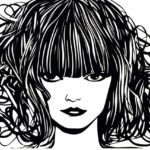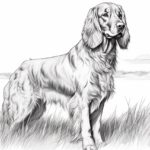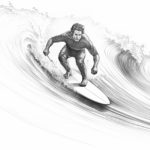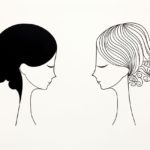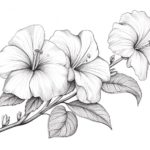Have you ever wanted to draw a realistic and detailed beard in your artwork? Drawing a beard can add depth and character to your portraits, illustrations, or sketches. While it may seem challenging at first, with the right techniques and practice, you can master the art of drawing beards.
In this step-by-step guide, we will walk you through the process of drawing a beard. We will cover everything from the initial sketch to adding texture and shading to create a realistic look. So grab your pencils and let’s get started!
Materials Required
Before we begin, make sure you have the following materials on hand:
- Drawing pencils (HB, 2B, 4B, and 6B)
- Paper or sketchbook
- Eraser
- Blending stump or tortillon
- Reference photo or model (optional)
Now that you have everything you need, let’s move on to the first step.
Step 1: Basic Outline
Start by lightly sketching the basic outline of the beard using a 2B or HB pencil. Pay close attention to the shape and direction of the beard. Is it long or short? Does it have any distinctive features like a mustache or sideburns? Take your time and adjust the proportions as needed.
Step 2: Outline Individual Hair Strands
Using a 4B or 6B pencil, start outlining individual hair strands within the beard. Focus on capturing the flow and direction of the hair. Beards often have a natural curve or wave, so make sure to incorporate those details into your drawing. Keep your lines loose and sketchy for now, as we will refine them later.
Step 3: Refine the Outline
With a 2B or HB pencil, go over the initial outline and refine it. Pay attention to the shape and thickness of the individual hair strands. Experiment with different line weights to create variation and depth. Make sure to erase any unnecessary guidelines or stray lines from the previous steps.
Step 4: Add Detail and Texture
Now it’s time to add detail and texture to your beard drawing. Start by shading the areas where the beard is darker or has more depth. Use a combination of light and dark pencil strokes to create a realistic texture. Pay attention to the direction of the hair and adjust your strokes accordingly.
Step 5: Blend and Soften
To create a smoother and more realistic look, use a blending stump or tortillon to blend the pencil strokes. This technique helps to soften harsh lines and creates a more seamless transition between different shades of the beard. Be careful not to over-blend, as it can make the texture look flat.
Step 6: Add Highlights and Shadows
To make your beard drawing appear three-dimensional, add highlights and shadows. Identify the light source in your reference photo or imagine one if you’re drawing from imagination. Use a white pencil or an eraser to create highlights on the areas where the light hits the beard. Shade darker areas with a 4B or 6B pencil to create shadows.
Step 7: Adjustments and Final Touches
Take a step back and evaluate your drawing. Are there any areas that need adjusting or refining? Use your eraser to lighten or correct any mistakes. Pay attention to the overall shape, proportions, and shading of the beard. Take your time and make any necessary adjustments before considering your drawing complete.
Conclusion
Drawing a beard can be a challenging yet rewarding experience. By using the step-by-step instructions provided in this guide, you can create a realistic and detailed beard in your artwork. Remember to practice regularly and experiment with different techniques to improve your skills.
So, grab your pencils and start drawing! With patience and dedication, you’ll be able to master the art of drawing beards in no time.
Gallery of Beard Drawings
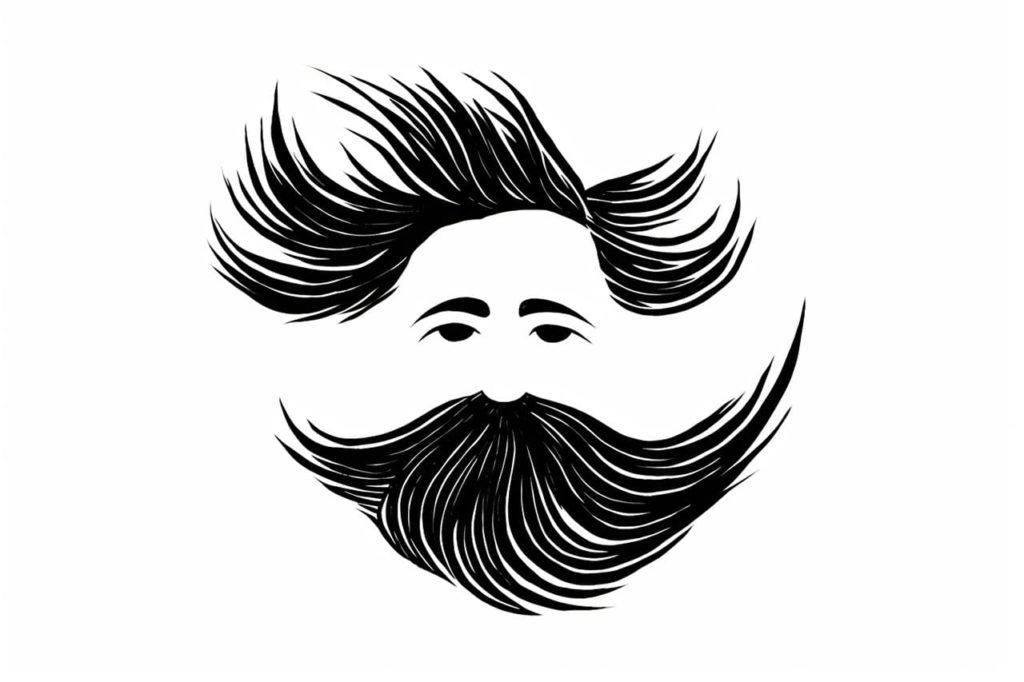
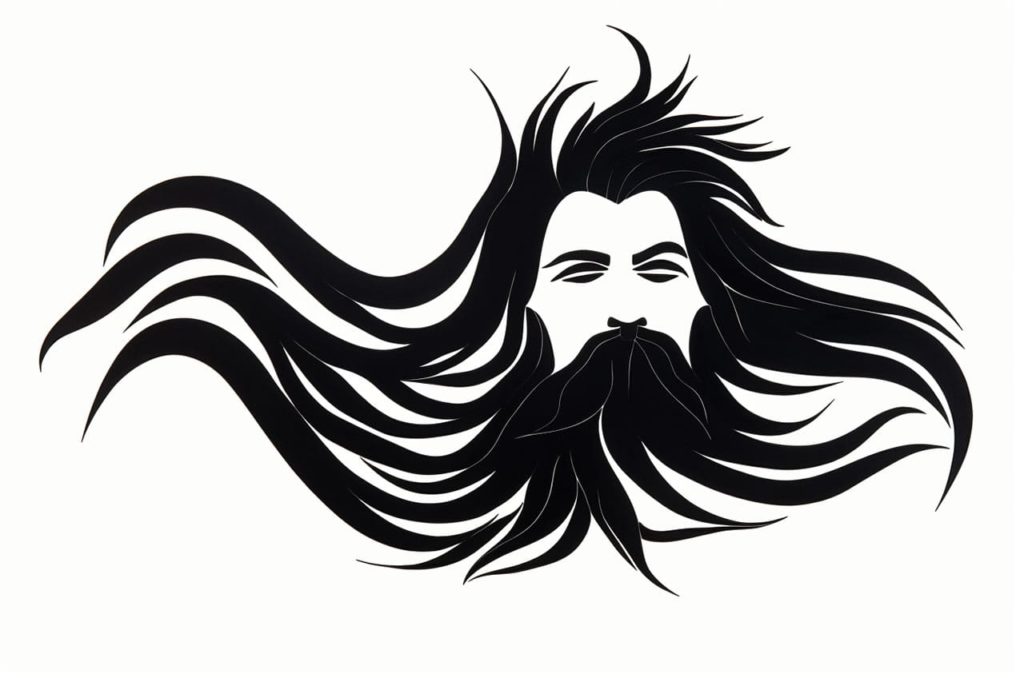
Fun Facts About Beards
- Beards have been a symbol of wisdom, power, and masculinity across various cultures and historical periods.
- The scientific term for the fear of beards is “pogonophobia.”
- In ancient Egypt, beards were often dyed and braided, signifying status and rank among men and women of royalty.
- Beards can grow at different rates, and shaving does not impact this speed despite popular myths.
- On average, a man’s beard grows about half an inch per month.
- Throughout history, several armies mandated shaving for soldiers, considering beards a liability in battle.
- The “Lumberjack Beard” trend has its roots in 19th-century America, known for its rugged, outdoorsy appeal.
- The genetic predisposition for beard growth varies widely and is influenced by both genetic and hormonal factors.
- Caring for a beard requires regular maintenance, including washing, conditioning, and sometimes using beard oils or balms to maintain softness.
- In some cultures, there are specific rituals or rites of passage associated with growing or shaving a beard.
Suggestions for Scenes and Settings for Beard Illustrations
- Viking Warrior: Capture the fierce look of a Viking with a long, braided beard, battleground scenes, and Nordic tattoos.
- Gentleman’s Parlor: Illustrate a gentlemen’s club setting with well-dressed men grooming and comparing their stylish facial hair.
- Beard Competition: Set up a lively scene of a beard competition with contestants showing off creative beard styles, like spirals or themed designs.
- Historical Figures: Draw famous historical figures known for their beards, like Leonardo da Vinci, sharing a table and discussing art or philosophy.
- Fantasy Dwarves: Create an underground setting where a group of dwarves gathers with their impressive beards glittering in the low light of their cave.
- Celestial Beards: Imagine a cosmic setting where beards are mixed with celestial motifs like stars and planets, merging galaxy elements in the beard strands.
- Beard Care Salon: Depict a modern barbershop with people receiving luxurious beard treatments, like hot towel wraps and essential oil massages.
- Beard Growth Timeline: Convey the life journey of a beard—from stubble to a full-grown masterpiece—complete with visual depictions of different life stages.
- Seasonal Beards: Show how beards change through the seasons, with snowflakes caught in a winter beard and flowers blooming in a spring beard.
- Cartoon Beard Adventures: Picture a character whose beard goes on its own whimsical adventures, tangling with objects and occasionally saving the day.


